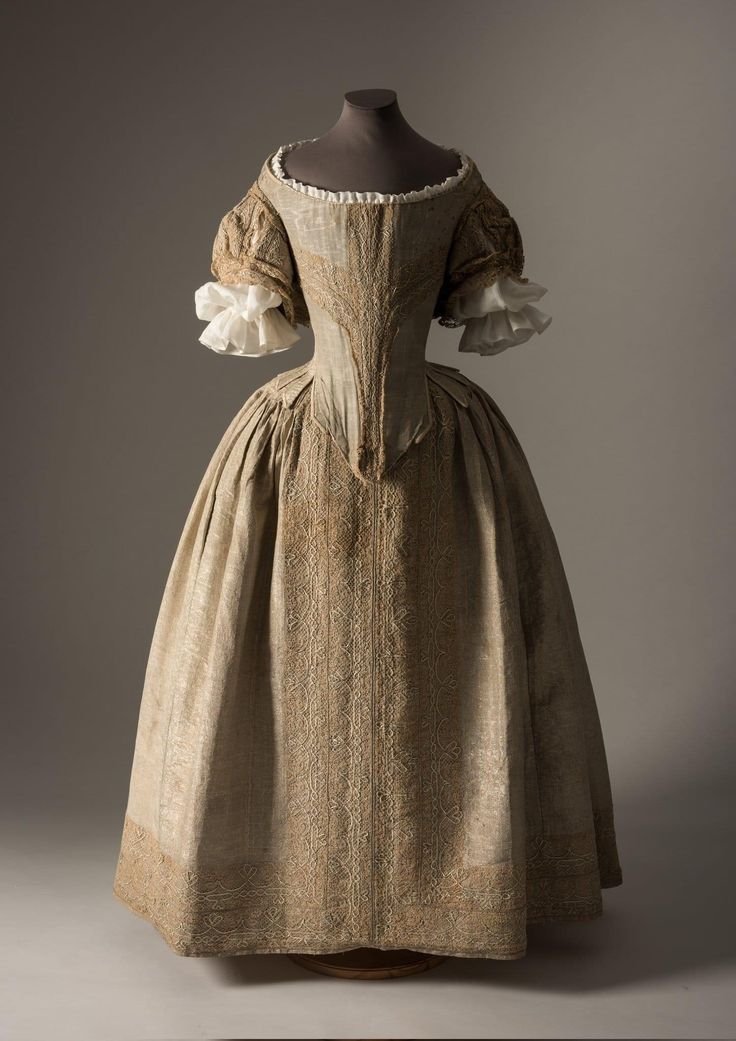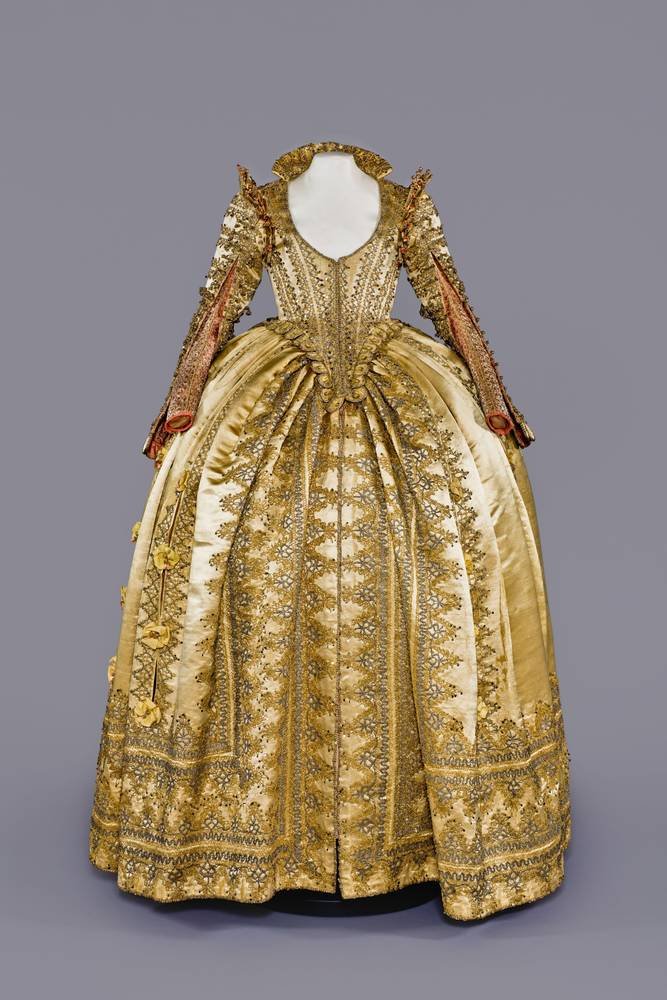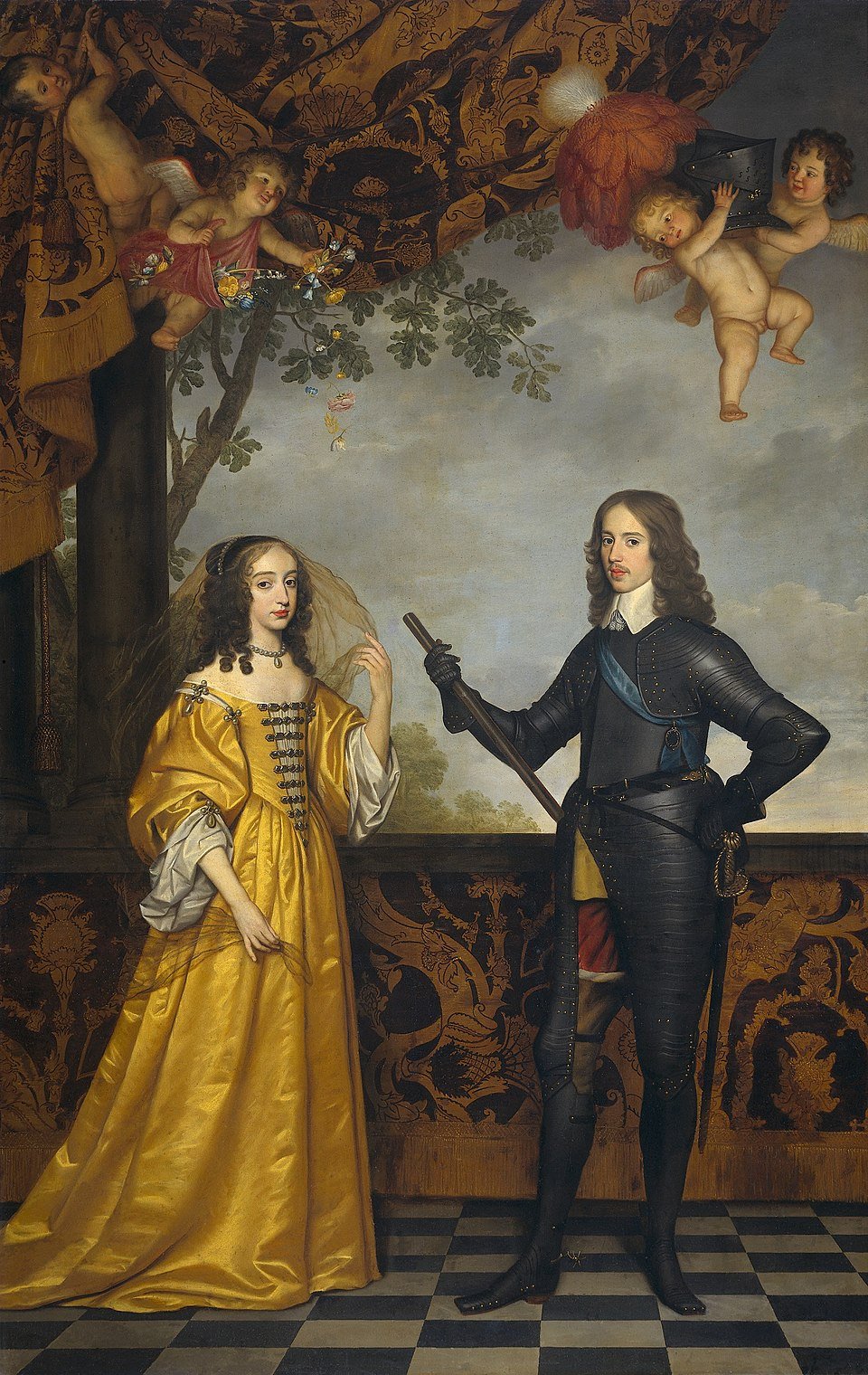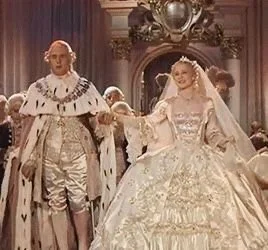From Pattern to Period: Creating a 17th Century Gown from Sewing Pattern Paper
There's something almost sacred about sewing pattern paper. The tissue-thin sheets with their mysterious lines and symbols have guided generations of hands in the creation of garments. But what happens when the pattern itself becomes the medium rather than the instruction? In this project, I've transformed humble sewing pattern paper into a historical dress inspired by 17th century European court fashion.
The Inspiration
My fascination with historical fashion runs deep, nurtured by countless hours spent watching period films like Marie Antoinette (1938) and The Slipper and the Rose While I love the embellished gowns from these cinematic treasures, for this particular project I was drawn to earlier silhouettes that emphasise dramatic structure over decoration.
Two specific historical references guided my design:
"The Silver Tissue Dress" once belonging to Lady Theophilia Harris of Bath, England (17th century)
The magnificent gold gown worn by Electress Magdalena Sibylla of Saxony (circa 1650) in the Staatliche Kunstsammlungen Dresden
The stunning gold dress depicted in William II, Prince of Orange and His Wife Mary Stuart by Gerard Van Honthorst (1647)
These references feature the square necklines, structured bodices, and voluminous skirts characteristic of 17th century aristocratic fashion—elements I wanted to capture in paper form.



The Material Transformation
To begin this journey, I needed to transform the pattern paper itself. Modern pattern tissue is too pristine and new-looking for a historical aesthetic, so I developed a natural dyeing technique that connects this project to traditional women's textile work throughout history.
An Experimental Dyeing Process
My dyeing process remains experimental, a journey of discovery reminiscent of how women would have developed their own dye formulas through trial and error centuries ago. During my daily walks, I collect a particularly dark, almost black bark that creates a deep, rich dye base. To this, I add onion skins which introduce subtle reddish tones to the mixture.
The process is deceptively simple yet requires patience: I simmer these natural materials in a pot for an extended period, creating a rich dye bath. The pattern paper then soaks in this mixture for approximately 24 hours. What continues to amaze me is the paper's resilience—despite its delicate nature, it doesn't disintegrate during this long immersion.
This natural dyeing technique yields varied results as I continue to experiment with different barks, leaves, and soaking times. Each batch emerges with slightly different coloration and aging effects, which adds to the authentic, lived-in quality of the final piece. The unpredictability of natural dyes parallels the unpredictable nature of historical dyeing processes, where exact color reproduction was never guaranteed.
Construction Techniques
The Bodice
For the upper portion of the dress, I was able to use a single piece of successfully dyed paper that maintained its integrity. The square neckline and short sleeves directly reference "The Silver Tissue Dress" of Lady Theophilia Harris, creating a silhouette that immediately evokes the 17th century aristocratic style.
The Impressionist Skirt
The skirt presented a particular challenge—large pieces of dyed paper simply wouldn't hold together. Rather than abandon my vision, I found inspiration in Impressionist painting techniques. Just as artists like Monet created cohesive images through small dabs of color that the eye blends together, I decided to build my skirt from smaller elements.
I cut the paper into circles, quartered them, and pinched each piece to create dimensional texture before attaching them to a lightweight paper base. The result is a skirt with movement and volume that captures the essence of historical petticoats while acknowledging the limitations of my chosen medium.
Beyond Aesthetics: The Meaning Behind the Material
This project goes deeper than my love for historical silhouettes. Growing up enchanted by romantic period films, I've developed a more nuanced understanding of women's limited autonomy throughout history. Using sewing pattern paper—traditionally a "woman's item"—transforms something prescriptive into something expressive.
Patterns tell us what to do, how to cut, where to stitch. By turning the pattern itself into the final product, I'm exploring the tension between instruction and creation, between limitation and artistic freedom. The natural dyeing process further connects this work to traditional women's crafts, often undervalued despite requiring significant skill and knowledge.
In many ways, this parallels women's experiences throughout history—finding creative expression within the confines of societal constraints, and developing expertise in domains that were simultaneously prescribed to them yet dismissed as unimportant.
In the following posts, I'll share more detailed progress updates as this historical paper dress continues to take shape...









